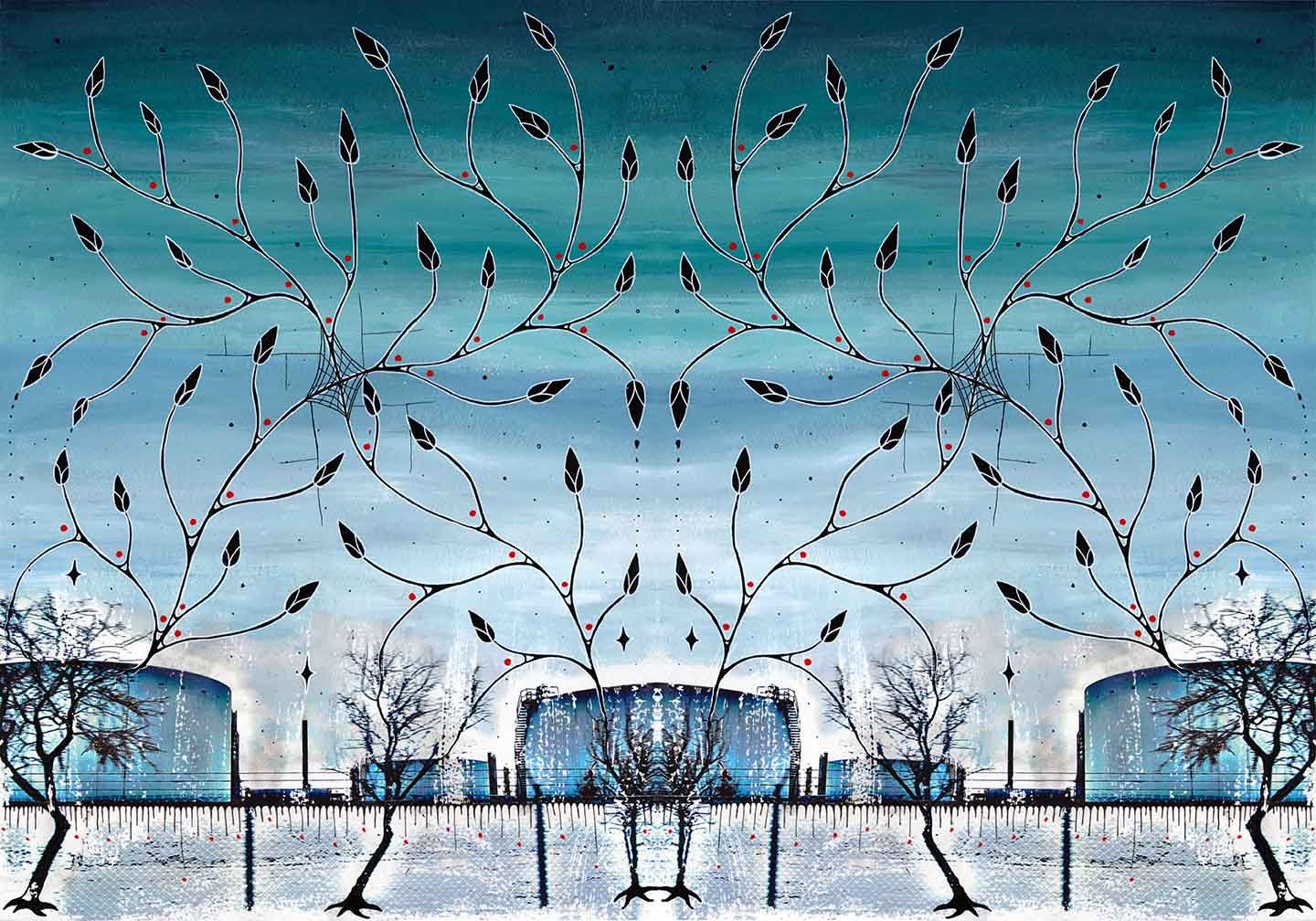The Land and the Refinery
Past, Present, and Future
The traditional use of the Land requires the health of the environment.
To understand our current disconnection from the Land, we need to understand our relationships with Chemical Valley, pollution, and refineries like Imperial Oil.
This site shares resources, research, and stores about Chemical Valley and the ways colonialism makes pollution possible.
June 13, 2024
Announcing the launch of Ada’s Data
Motherhood Through Data Kinship and Anishinabek Teachings
As a mother to two in Aamjiwnaang First Nation, Ada Lockridge shares the same concerns most parents have for the environment their children are learning and growing in. Ada is well known as a community leader, advocate, strong and resilient voice of Aamjiwnaang.
Learn about Ada’s grassroots research, her community work, and over a decade of data she collected about spills and notifications. We honour Ada’s tremendous contributions to telling us who, what, when, and where is being impacted by Canada’s Chemical Valley.
Latest News
Stay updated on what's happening in our community
Resources
Learn about some of our community-based projects about Chemical Valley.
Ada’s Data
Motherhood Through Data Kinship and Anishinabek Teachings
Benzene is carcinogen and hormone disrupting chemical that can cause harm even at low-levels of exposure.
Chemical Information: Benzene
This Map is built out of Industry provided notifications about pollution incidents in Chemical Valley that were collected by Aamjiwnaang community members from 2013-2023.
Pollution Notification Map
The Pollution Reporter Mobile App Version 2.0 is focused on Ontario's Chemical Valley, where some 40% of Canada's petrochemicals are processed, and that is on traditional Anishinaabek territory, and particularly the land of Aamjiwnaang First Nation.
Pollution Reporter App
Data Colonialism in Canada's Chemical Valley: Aamjiwnaang First Nation and the Failure of the Pollution Notification System
A Special Report from the Yellowhead Institute and the Technoscience Research Unit
This report is about the relationship between the petrochemical industry in Ontario’s Chemical Valley and Aamjiwnaang First Nation. Central to this relationship is pollution: the spills, flares, air releases and how those events are communicated to the community.
Communication about pollutants is regulated by provincial and federal governments, which actually provide limited oversight, allowing Shell, ExxonMobil, and other petrochemical polluters to form their own industry associations that determine what information is provided to the community and when.
Stories about the Land and the Refinery
The land around Nayaano-nibiimaang Gichigamiin (the Five Great Lakes) has endured pollution from oil extraction longer than any other place on earth. The stories that make up Chemical Valley and Imperial Oil as the oldest refinery help us to understand the changes we need to make for our future.
The Stories section of the website shares ongoing research, archival documents, environmental data, and community knowledge about the relationship between the Chemical Valley and the land. This project is ongoing, and we will continue to add stories.












